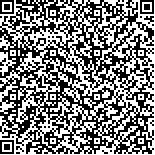Archive > Volume 41 Issue 8 > 2015,41(8):970-979. DOI:10.7519/j.issn.1000-0526.2015.08.006 Prev Next
Validation of Six SatelliteDerived Rainfall Estimates over China
- Article
- Figures
- Metrics
- Preview PDF
- Reference
- Related
- Cited by
- Materials
Abstract:
Using grided data from 2419 stations of National Meteorological Information Centre during 2012-2013 and the TRMM (3B40RT, 3B41RT, 3B42RT), CMORPH, GSMaP, HYDRO satellitederived rainfall data, this paper evaluated and discussed the validation of rainfall estimates from the six data with 0.25°×0.25° spatial resolution and the accuracy of the retrieved daily rainfall products over the whole China, Eastern China and Western China. Results show that the accuracy of satellitederived data is higher in spring, summer and autumn than in winter. The linear correlation coefficient, mean absolute error (MAE), root mean square error (RMSE), probability of detection (POD), and the false alarm ratio (FAR) change with seasons. Meanwhile, the index of each data is better in summer than in winter. The quantitative statistical metrics are obviously different, changing in monthly scale. The estimate ability of satellitederived rainfall is poor when estimating solid and smallamount precipitation. For the large range of precipitation events over China, all the 6 rainfall products have better result. The better quality is realized by merging multisources, and the worse quality results from singlesource microwave, infrared or visible light. The 3B42RT retrieves better falling area of rainfall, but extreme value is larger. The comprehensive evaluation of the CMORPH is better than others. The spatial distribution of accuracy of satellitederived rainfall is related to terrains of China.
Keywords:
Project Supported:
Clc Number:


Mobile website









